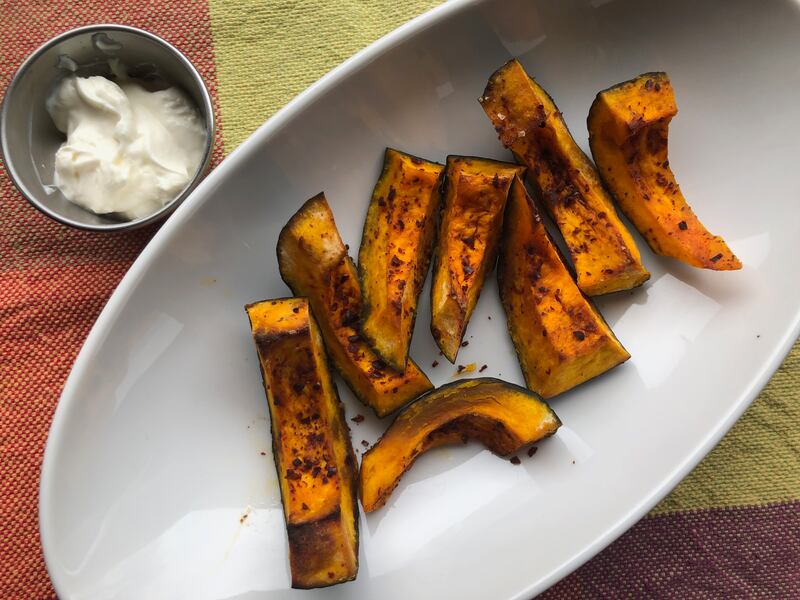Jim Dixon wrote about food for WW for more than 20 years, but these days most of his time is spent at his olive oil-focused specialty food business Wellspent Market. Jim’s always loved to eat, and he encourages his customers to cook by sending them recipes every week through his newsletter. We’re happy to have him back creating some special dishes just for WW readers.
Small half-moons of delicata squash—roasted until a shade of deep orange with caramelized edges, bright yellow striped skins still attached—might be the most common version of roasted winter squash.
The little cylinders are easy to prep, produce a manageable portion and are delicious. But I prefer one of the pumpkinlike varieties like kabocha, Hubbard, red kuri or pie pumpkin, all members of the Cucurbita maxima branch of the squash family. They’re often big and require eating squash in several forms for a few days, but the benefits of dryer flesh and better flavor are worth it.
Except for the flinty beige rind of the butternut, all of the squash skins are edible. Butchering a big squash is much easier if you don’t have to peel it. Cut the squash in half, then use the tip of a spoon to extract the seeds (save them for roasting; more below) before scraping out the stringy pith. Cut the halves into smaller pieces to make slicing easier, then cut as many slices about 3/4 of an inch thick that will fit into a skillet or roasting pan. Store any leftover cut squash pieces in a plastic bag in the refrigerator for a few days, or grate them with the skin on in the food processor. The grated squash freezes well and can be added to soup or used to make fritters.

Coat the bottom of a heavy skillet with olive oil and add the squash slices, then sprinkle with flaky salt and freshly ground pepper or red pepper flakes. Herb blends like harissa or barbecue rub are also very good. Cook in the oven at 350 F for 25 to 30 minutes, or until a knife easily pierces the squash.
Put the seeds in a smaller skillet or baking dish, add a splash of olive oil, some salt, and any other spices you like, and roast with the squash. They’ll take longer, maybe 25 to 30 minutes, but they’re ready to eat when they get crunchy and a little dark.
These are good hot or at room temperature, especially with this garlicky yogurt sauce inspired by ranch dressing.
Garlicky Yogurt Sauce
1 teaspoon sugar
1 teaspoon sea salt
2 tablespoons apple cider vinegar
1 teaspoon garlic powder (or 2 cloves garlic, finely chopped)
2 tablespoons extra virgin olive oil
2 tablespoons mayonnaise
1 cup Greek-style yogurt
Dissolve the sugar and salt in the vinegar, then stir in the oil and other ingredients.

